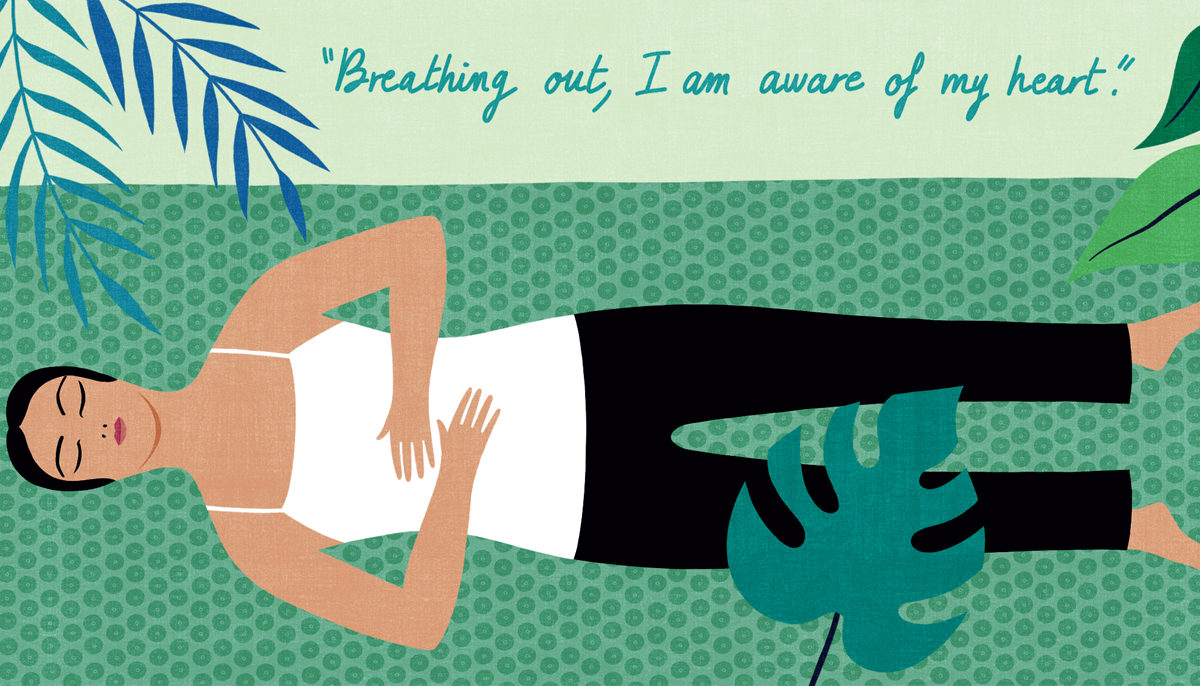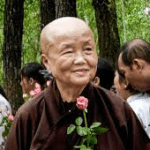Having a spiritual practice doesn’t mean we only take care of our mind. Body and mind are two faces of one reality and they support each other. Because of the way we live and consume, stress accumulates in our body and erodes our sense of well-being. By taking care of our body and incorporating moments of deep relaxation into daily life, we reduce stress, anxiety, and irritation, and help balance body and mind.
Sometimes our body needs to rest, but our mind still wants to do many things. Though we think we can overcome the needs of the body with our mind, this is not something we can continue doing forever. From time to time we need to stop, bring our awareness back to our body, and relax. Otherwise, tension builds up and we can lose our temper very easily and be unkind. When we’re disturbed by a strong emotion or we feel we’re burning out—that it’s all too much and we’re going to crack—that’s the perfect moment for deep relaxation.
We use our mindfulness like a ray of light, bringing relaxation to each part.
The practice of deep relaxation is based on a teaching called Mindfulness of the Body in the Body (Kayagata-sati Sutta, Majjhima Nikaya 119), in which the Buddha advises us to visit every part of our body so we know what is going on in our body. In the same way that we practice being aware of every state of our mind—accepting, understanding, then releasing each state that arises—we practice this way with our body, visiting every part with awareness, acceptance, care, and without judgment.
A full session of deep relaxation can last from twenty minutes to an hour. We use our mindfulness like a ray of light to scan our body, bringing awareness and relaxation to each part.
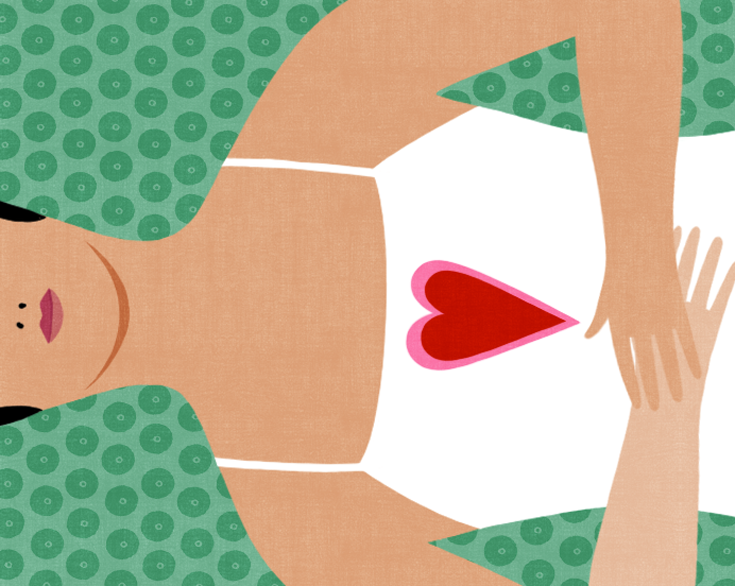
1. Awareness of Breath and Earth
Lie down on your back with your arms at your sides. If you prefer, you can sit in a chair. Make yourself comfortable, close your eyes, and relax. Begin to follow your breathing and just be with your in-breath and out-breath. Feel the earth beneath you, supporting you. Bring your awareness to your abdomen rising and falling. If you feel agitated or dispersed, put your hand on your abdomen and feel it rise and fall as the air goes in and out. Say quietly to yourself, “Breathing in, I am with my in-breath. Breathing out, I am with my out-breath.”
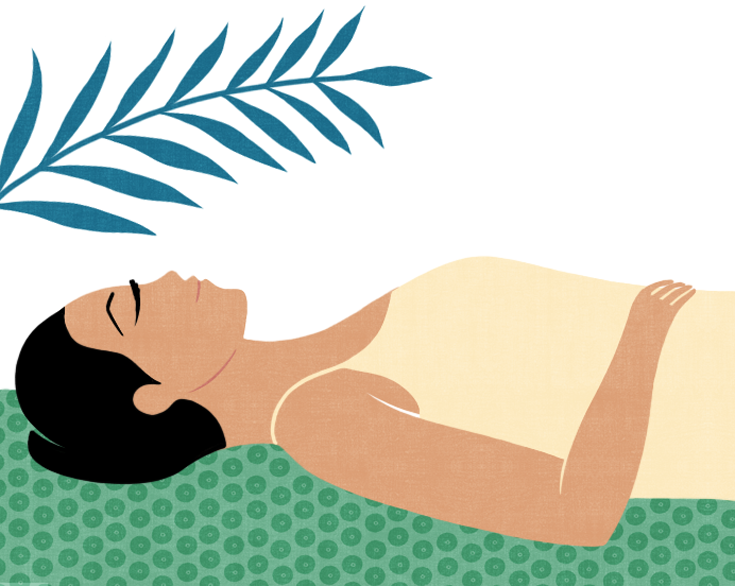
2. Body Scan and Gratitude
Continue to follow your breathing as you bring awareness and relaxation to each part of your body from the top of your head to the tips of your toes. You can begin with the hair on your head, your scalp, brain, forehead, and so on. For each body part, say something like this quietly to yourself: “Breathing in, I am aware of my eyes. Breathing out, I release the tension in all the tiny muscles around my eyes.”
As you bring your attention to each body part in turn, contemplate your gratitude. For example, we often forget our heart, yet it beats night and day. Now we have a chance to pay attention to our heart and show our appreciation to our heart. Say silently to yourself, “Breathing in, I bring my attention to my heart. Breathing out, I am aware of my heart.”
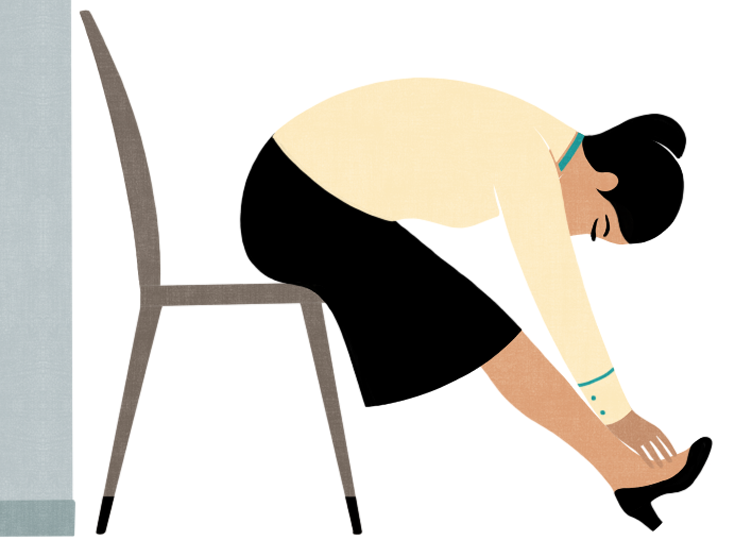
3. Let Go into Deep Relaxation
Bring your awareness back to your abdomen rising and falling. You might enjoy some minutes of quiet or gentle music. If during the session you feel yourself falling asleep, don’t resist. The sleep experienced during deep relaxation is brief but it’s free from agitation and is nourishing and healing. Once the session is over, move your arms and legs, then open your eyes. Sit up gently. Do some stretching. Slowly stand up. Take a moment to breathe and be aware of the sensations in your body.
When you’re having an intense day at work, school, or with family activities, and you don’t have time for a full deep relaxation session, divide your day into segments and relax between each segment or activity. I myself take several short deep relaxation breaks every day. We think we can’t take a moment to rest, but just a few minutes of deep relaxation can renew us and bring peace and vitality back to body and mind.
Find a place to lie down where you won’t be disturbed. If there’s not enough space, pull a chair near the wall, close your eyes, and stretch out your legs. Relax your body and follow your breathing. Bring your attention to just a few of your body parts instead of doing the whole sequence. The shoulders are often a good place to bring our attention: “Breathing in, I’m aware of my shoulders. Breathing out, I relax my shoulders and release the tension.” After relaxing like this for a few minutes, you will come to your next activity refreshed and with more physical energy and mental clarity.
Deep relaxation can also help if you have trouble sleeping. Lie down on your bed and become aware of your breathing. Place your hand on your abdomen, feel it rise and fall with your in-breath and out-breath. You might say quietly to yourself, “Breathing in, I’m aware of the muscles in my face. Breathing out, I release the muscles in my face,” or simply, “Breathing in, I smile. Breathing out, I release.” A gentle smile will relax the muscles in your face and help calm your nervous system. This is loving-kindness directed to yourself. Even if you don’t sleep, resting in this way can be almost as good as sleeping.
